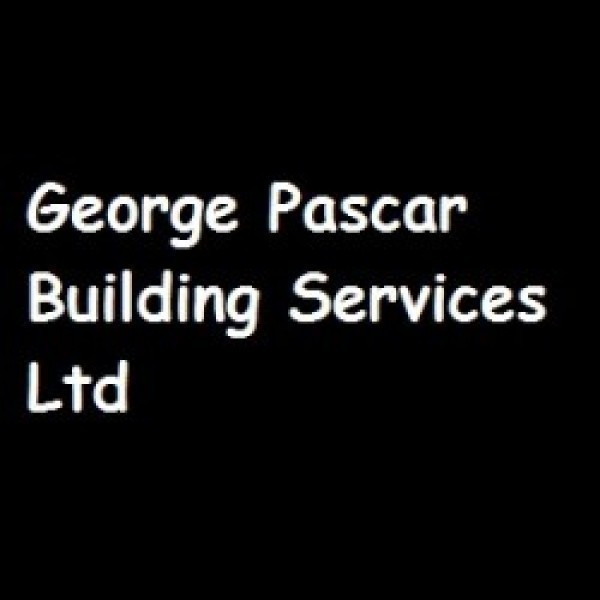Loft Conversions in Central London
George Pascar Building Services Ltd is a premier choice for all your building needs in The Hyde and the... read more »
Welcome to Impress Europe Ltd, your go-to construction experts in Chipping Barnet, Barnet, Lo... read more »
Welcome to Five Stars Builders Ltd, your premier choice for exceptional building services in... read more »
Cosy Homes Property Maintenance LTD is a distinguished business based in Tolworth, offering a comprehensive range of ser... read more »
Welcome to DPS Building Ltd, your trusted partner for all your building needs in Church End and the greater Barnet, London area. Speciali... read more »
Dar Construction Services Ltd is a premier construction company based in the heart of Colyers, proudly serving the vibra... read more »
A&A Best At First Ltd is a premier choice for all your building and renovation needs in Chingford Hatch... read more »
Eric Lala Construction Ltd is a premier construction company based in Addiscombe, renowned for its exceptional services... read more »
Welcome to Building Solution Art Limited, your premier choice for top-notch building services in Bloomsbury and the wider Camden area of... read more »
Welcome to 10 Ten Construction Ltd, your go-to experts for all building needs in Borehamwood and across Hertfordshire. Specialising in Bu... read more »
Dhaliwal22 Construction Ltd is a reputable construction company based in Hayes Town, proudly serving the Hillingdon area... read more »
Welcome to Nikollas Developments Ltd, your trusted partner for all construction needs in Higham Hill and the wider Waltham Forest area of... read more »
Welcome to Synergy Building Services Ltd, your premier choice for top-notch building solutions in Yeading and across Hillingdon, London.... read more »
Able Refurbishments Ltd: Your Trusted Tradespeople in Ewell and Surrey
Welcome to Able Refurbishments Ltd, your... read more »
Welcome to AGKBUILD LTD, your premier choice for top-notch extension builders and property maintenance services in Colindale, Barnet, Lon... read more »
Welcome to Christian Construction Services Ltd, your go-to experts for all things construction in Church End, Barnet, London. A... read more »
Welcome to March Property & Construction Ltd, your go-to experts for Extension Builders, Renova... read more »
Sallaku Building Services is your go-to solution for all your construction and renovation needs in Brentford End, proudl... read more »
SMR Building Contractors Ltd is a premier construction company based in the heart of Bromley Park, offe... read more »
Welcome to AG Partners LTD, your premier choice for builders, carpenters, and property mainte... read more »
Understanding Loft Conversions in Central London
Loft conversions in Central London have become increasingly popular as homeowners seek to maximise their living space without the hassle of moving. With property prices soaring, transforming an unused attic into a functional area is a cost-effective solution. This article delves into the intricacies of loft conversions, exploring the benefits, types, planning permissions, and more.
The Benefits of Loft Conversions
Loft conversions offer a plethora of advantages. Firstly, they significantly increase the value of your property. In Central London, where space is at a premium, an additional room can boost your home's market value by up to 20%. Secondly, they provide extra living space, which can be used as a bedroom, office, or playroom. This is particularly beneficial for growing families or those working from home.
Moreover, loft conversions are a sustainable choice. By utilising existing space, you reduce the need for new construction, thereby minimising your environmental footprint. Additionally, modern loft conversions often incorporate energy-efficient designs, further enhancing their eco-friendliness.
Types of Loft Conversions
There are several types of loft conversions, each with its own set of advantages and considerations. The most common types include:
- Velux Conversions: These are the simplest and most cost-effective, involving the installation of Velux windows into the existing roofline. They are ideal for lofts with ample headroom.
- Dormer Conversions: A dormer conversion extends the existing roof, creating additional floor space and headroom. This type is versatile and suits most property types.
- Mansard Conversions: These involve altering the roof structure to create a flat roof with a back wall sloping at 72 degrees. They offer maximum space but require more extensive construction work.
- Hip-to-Gable Conversions: Suitable for semi-detached or detached houses, this conversion extends the hip roof to create a vertical gable wall, increasing internal space.
Planning Permission and Building Regulations
In Central London, planning permission for loft conversions is often not required, as many fall under permitted development rights. However, there are exceptions, particularly for listed buildings or properties in conservation areas. It's crucial to check with your local council before proceeding.
Building regulations, on the other hand, are mandatory. They ensure that the conversion is structurally sound and safe. Key considerations include fire safety, insulation, and staircase design. Hiring a professional architect or surveyor can help navigate these requirements.
Cost Considerations
The cost of a loft conversion in Central London varies depending on the type and complexity of the project. On average, prices range from £30,000 to £60,000. Factors influencing cost include the size of the loft, the type of conversion, and the materials used.
While the initial investment may seem steep, the long-term benefits often outweigh the costs. A well-executed loft conversion can add significant value to your property, making it a worthwhile investment.
Choosing the Right Contractor
Selecting a reputable contractor is crucial for a successful loft conversion. Look for professionals with experience in Central London projects, as they will be familiar with local regulations and challenges. Request references and view previous work to ensure quality and reliability.
It's also wise to obtain multiple quotes to compare prices and services. Remember, the cheapest option isn't always the best; prioritise quality and experience over cost.
Designing Your Loft Space
Designing your loft space is an exciting part of the conversion process. Consider the purpose of the room and how it will fit into your lifestyle. For instance, if you're creating a bedroom, ensure there's adequate storage and natural light. For a home office, focus on ergonomic furniture and soundproofing.
Incorporating skylights or dormer windows can enhance natural light, making the space feel larger and more inviting. Additionally, choosing a neutral colour palette can create a sense of openness and tranquillity.
Maximising Natural Light
Natural light is a key element in any loft conversion. It not only enhances the aesthetic appeal but also improves energy efficiency by reducing the need for artificial lighting. Consider installing large windows or skylights to flood the space with light.
Mirrors can also be strategically placed to reflect light and create the illusion of a larger space. Additionally, opting for light-coloured walls and furnishings can help maximise brightness.
Insulation and Energy Efficiency
Proper insulation is essential for maintaining a comfortable temperature in your loft conversion. It prevents heat loss in winter and keeps the space cool in summer. Insulation also contributes to energy efficiency, reducing your utility bills.
Consider using eco-friendly insulation materials, such as sheep's wool or recycled denim, for a sustainable solution. Additionally, ensure that windows and doors are double-glazed to minimise heat transfer.
Addressing Structural Challenges
Structural challenges are common in loft conversions, particularly in older Central London properties. Issues such as low ceilings, uneven floors, and awkward layouts can complicate the process.
Engaging a structural engineer can help identify and address these challenges. They can provide solutions such as reinforcing beams, adjusting floor levels, or reconfiguring the layout to maximise space and functionality.
Ensuring Fire Safety
Fire safety is a critical consideration in any loft conversion. Building regulations require that the conversion includes adequate fire protection measures, such as smoke alarms, fire doors, and escape routes.
It's essential to work with professionals who understand these requirements and can implement them effectively. Regular maintenance and testing of fire safety systems are also crucial to ensure ongoing protection.
Creating a Comfortable Living Environment
Creating a comfortable living environment in your loft conversion involves more than just aesthetics. Consider factors such as ventilation, heating, and acoustics to ensure the space is pleasant and functional.
Installing a ventilation system can improve air quality and prevent dampness. Underfloor heating is an efficient way to keep the space warm, while soundproofing can reduce noise from outside or other parts of the house.
Legal and Financial Considerations
Before embarking on a loft conversion, it's important to consider the legal and financial implications. Ensure that you have the necessary permissions and that the project complies with all regulations.
Financially, it's wise to set a budget and stick to it. Consider potential additional costs, such as unforeseen structural issues or design changes. Consulting with a financial advisor can help manage your finances effectively.
Maintaining Your Loft Conversion
Once your loft conversion is complete, regular maintenance is essential to preserve its condition and value. This includes checking for leaks, maintaining insulation, and ensuring that all systems are functioning correctly.
Regular cleaning and upkeep will also keep the space looking fresh and inviting. Consider setting a maintenance schedule to address any issues promptly and prevent long-term damage.
Frequently Asked Questions
- Do I need planning permission for a loft conversion in Central London? Most loft conversions fall under permitted development rights, but it's best to check with your local council.
- How long does a loft conversion take? The duration varies, but most projects take between 6 to 12 weeks.
- Can I convert any loft? Not all lofts are suitable for conversion. Factors such as headroom and roof structure must be considered.
- Will a loft conversion add value to my home? Yes, a well-executed conversion can increase your property's value by up to 20%.
- What is the cost of a loft conversion? Costs vary, but typically range from £30,000 to £60,000.
- How do I choose a contractor? Look for experienced professionals with a good reputation and view their previous work.
In conclusion, loft conversions in Central London offer a fantastic opportunity to enhance your living space and increase your property's value. By understanding the process and considering all aspects, from design to legal requirements, you can create a beautiful and functional space that meets your needs. Whether you're looking to add a bedroom, office, or playroom, a loft conversion is a smart investment for any homeowner.
Send a message























